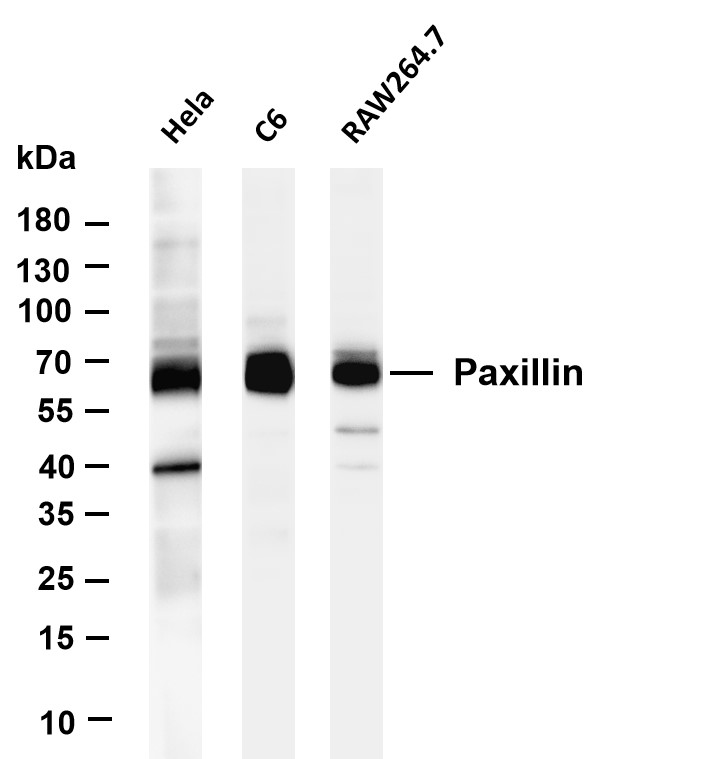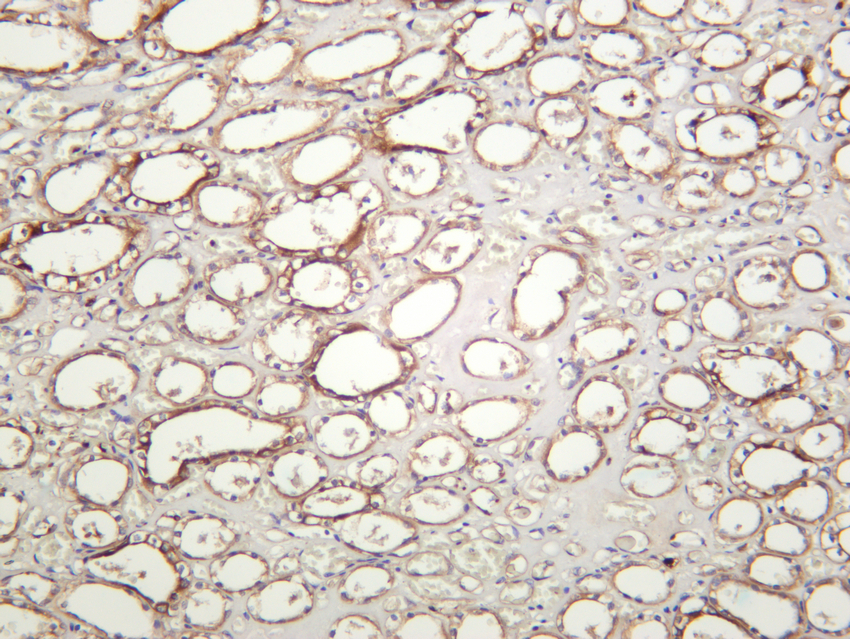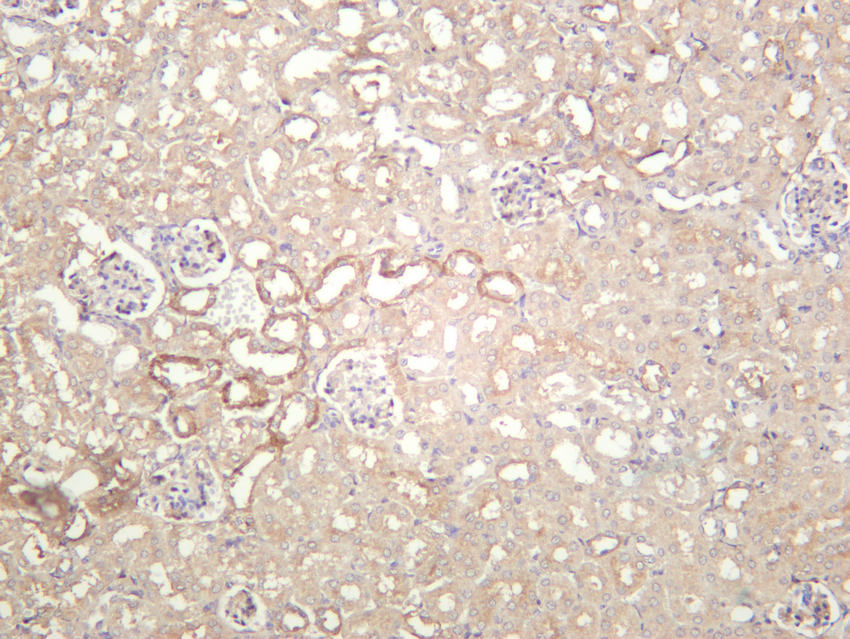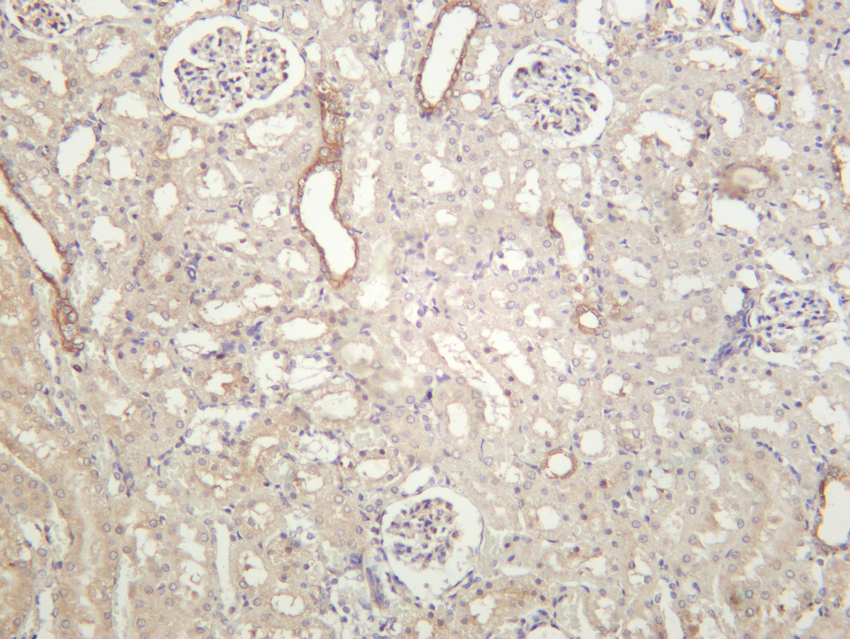Paxillin (PT0303R) PT® Rabbit mAb
- Catalog No.:YM8177
- Applications:WB;IHC;IF;IP;ELISA
- Reactivity:Human; Mouse; Rat;
- Target:
- Paxillin
- Fields:
- >>Chemokine signaling pathway;>>VEGF signaling pathway;>>Focal adhesion;>>Leukocyte transendothelial migration;>>Regulation of actin cytoskeleton;>>Bacterial invasion of epithelial cells;>>Shigellosis;>>Yersinia infection;>>Human cytomegalovirus infection;>>Human papillomavirus infection;>>Human immunodeficiency virus 1 infection;>>Viral carcinogenesis;>>Proteoglycans in cancer
- Gene Name:
- PXN
- Protein Name:
- Paxillin
- Human Gene Id:
- 5829
- Human Swiss Prot No:
- P49023
- Mouse Gene Id:
- 19303
- Mouse Swiss Prot No:
- Q8VI36
- Rat Gene Id:
- 360820
- Rat Swiss Prot No:
- Q66H76
- Specificity:
- endogenous
- Formulation:
- PBS, 50% glycerol, 0.05% Proclin 300, 0.05%BSA
- Source:
- Monoclonal, rabbit, IgG, Kappa
- Dilution:
- IHC 1:1000-1:4000;WB 1:1000-1:5000;IF 1:200-1:1000;ELISA 1:5000-1:20000;IP 1:50-1:200;
- Purification:
- Protein A
- Storage Stability:
- -15°C to -25°C/1 year(Do not lower than -25°C)
- Other Name:
- PXN;Paxillin
- Molecular Weight(Da):
- 68kD
- Observed Band(KD):
- 68kD
- Background:
- This gene encodes a cytoskeletal protein involved in actin-membrane attachment at sites of cell adhesion to the extracellular matrix (focal adhesion). Alternatively spliced transcript variants encoding different isoforms have been described for this gene. These isoforms exhibit different expression pattern, and have different biochemical, as well as physiological properties (PMID:9054445). [provided by RefSeq, Aug 2011],
- Function:
- function:Cytoskeletal protein involved in actin-membrane attachment at sites of cell adhesion to the extracellular matrix (focal adhesion).,PTM:Phosphorylated on tyrosine residues during integrin-mediated cell adhesion, embryonic development, fibroblast transformation and following stimulation of cells by mitogens.,similarity:Belongs to the paxillin family.,similarity:Contains 3 LIM zinc-binding domains.,similarity:Contains 4 LIM zinc-binding domains.,subunit:Binds in vitro to vinculin as well as to the SH3 domain of c-SRC and, when tyrosine phosphorylated, to the SH2 domain of V-CRK. Isoform beta binds to focal adhesion kinase but weakly to vinculin. Isoform gamma binds to vinculin but only weakly to focal adhesion kinase. Interacts with GIT1, NUDT16L1/SDOS, PARVA and TGFB1I1. Component of cytoplasmic complexes, which also contain GIT1, ARHGEF6 and PAK1 (By similarity). Binds ASAP2. Int
- Subcellular Location:
- Cytoplasm
- Expression:
- Brain,Epithelium,Lung,Placenta,T-cell,Uterus,
Overexpression of FOXM1 is associated with metastases of nasopharyngeal carcinoma. UPSALA JOURNAL OF MEDICAL SCIENCES Upsala J Med Sci. 2014;119(4):324-332 WB Human C666-1 cells wa
- June 19-2018
- WESTERN IMMUNOBLOTTING PROTOCOL
- June 19-2018
- IMMUNOHISTOCHEMISTRY-PARAFFIN PROTOCOL
- June 19-2018
- IMMUNOFLUORESCENCE PROTOCOL
- September 08-2020
- FLOW-CYTOMEYRT-PROTOCOL
- May 20-2022
- Cell-Based ELISA│解您多样本WB检测之困扰
- July 13-2018
- CELL-BASED-ELISA-PROTOCOL-FOR-ACETYL-PROTEIN
- July 13-2018
- CELL-BASED-ELISA-PROTOCOL-FOR-PHOSPHO-PROTEIN
- July 13-2018
- Antibody-FAQs
- Products Images

- Various whole cell lysates were separated by 4-20% SDS-PAGE, and the membrane was blotted with anti-Paxillin (PT0303R) antibody. The HRP-conjugated Goat anti-Rabbit IgG(H + L) antibody was used to detect the antibody. Lane 1: Hela Lane 2: C6 Lane 3: RAW264.7 Predicted band size: 68kDa Observed band size: 68kDa

- Human kidney was stained with anti-Paxillin (PT0303R) rabbit antibody

- Mouse kidney was stained with anti-Paxillin (PT0303R) rabbit antibody

- Rat kidney was stained with anti-Paxillin (PT0303R) rabbit antibody


